Pomegranates are a delicious and nutritious fruit, known for their vibrant red color and unique taste. They can add a burst of flavor to any dish, salad, or dessert, and are packed with essential nutrients like vitamin C, potassium, and antioxidants.
But knowing when a pomegranate is ripe and ready to be consumed can be a bit challenging for those who are new to this exotic fruit.
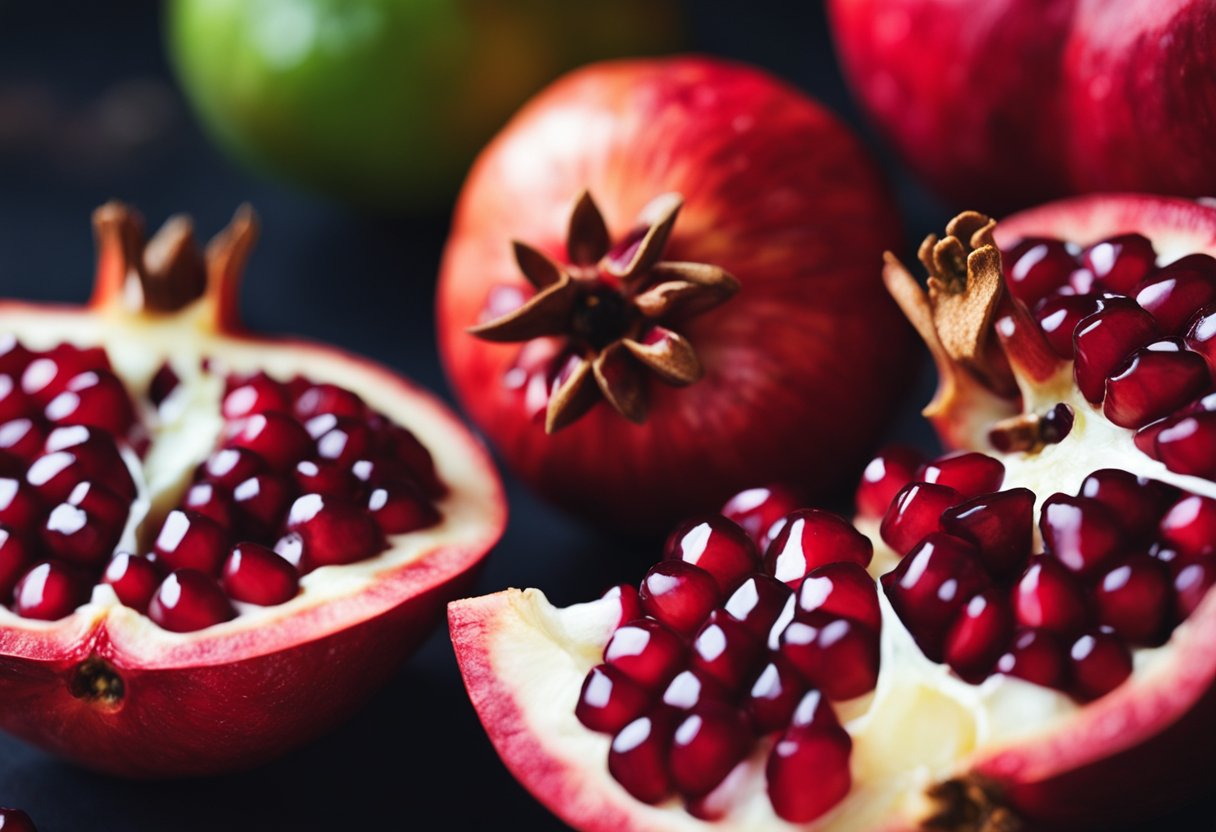
Recognizing a ripe pomegranate is crucial for the best taste and texture. There are a few key indicators to look out for when determining if a pomegranate is ripe. Observing the shape, weight, and skin tone can provide valuable clues to its ripeness.
Ripe pomegranates typically have flattened, angular sides rather than being perfectly round, and their leathery skin should be smooth, firm, and range from light to dark red in color. Weight can also be a telling factor, as ripe pomegranates are heavier due to the juicy, plump arils inside.
Understanding pomegranate anatomy
Pomegranates are a unique and nutritious fruit, known for their rich red hue, leathery skin, and clusters of juicy seeds called arils. When selecting a pomegranate, it’s essential to understand the fruit’s anatomy to determine its ripeness and quality.
The skin of a pomegranate is crucial in gauging its ripeness. A ripe pomegranate will have a deep, rich reddish-brown color and a smooth, firm texture.
The skin should be free of cracks and blemishes, and any green coloration indicates the fruit is not yet ripe. The thickness of the skin can vary, but it should always be leathery and not easily punctured.
Inside the fruit, you’ll find the seeds, or arils, which are the edible part of the pomegranate. These small, juicy seeds have a sweet-tart taste and are encased in a thin membrane. When ripe, the seeds should be plump and brightly colored, with a juicy, tender texture.
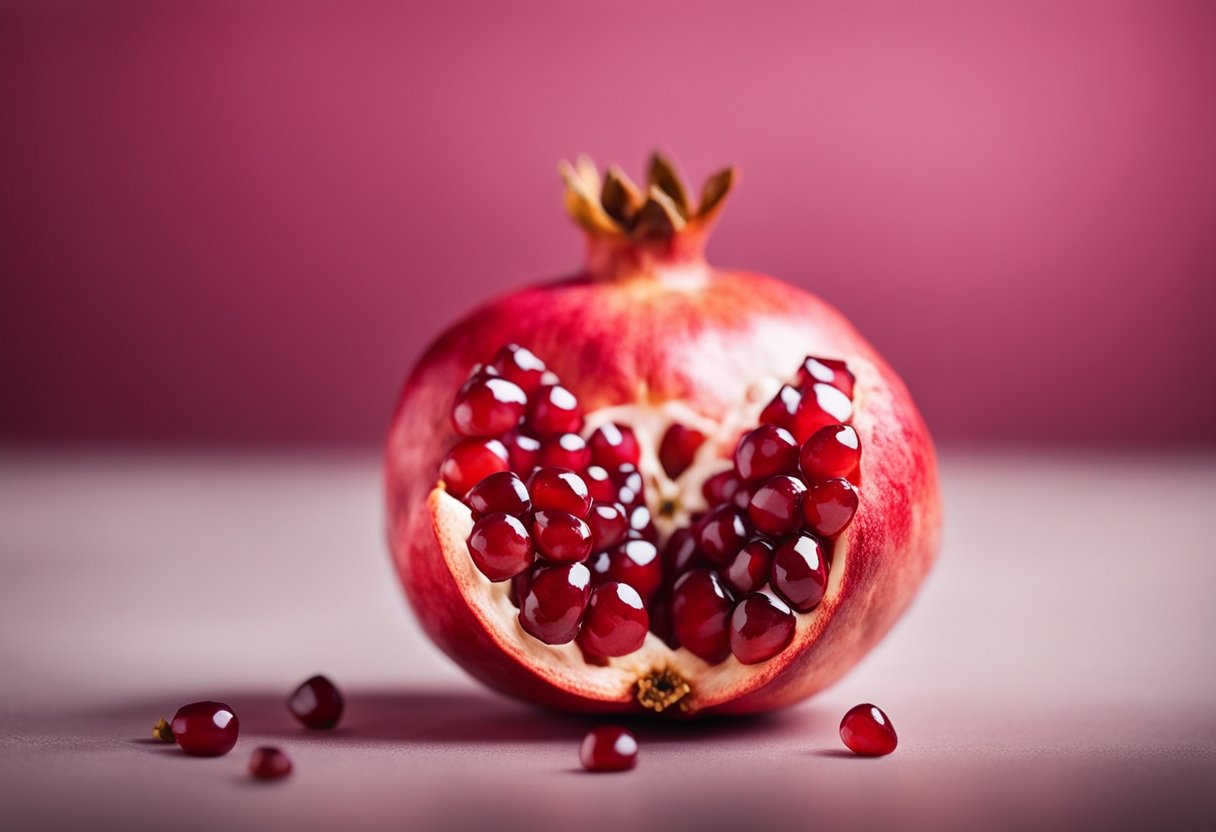
The stem of the pomegranate is not a significant factor in determining the fruit’s ripeness. However, a healthy, firmly attached stem can indicate that the fruit is fresh and less likely to have mold or decay.
Pomegranates grow on trees, specifically pomegranate trees, which are native to the Middle East and Mediterranean regions. These trees are relatively small, reaching heights of 15-25 feet and bearing fruit during the fall months. As the fruit develops, it forms from a small, green bud that eventually blossoms into a stunning red flower.
The blossom ends of pomegranates are the points where the flower once attached to the fruit. A ripe pomegranate will have a slight indentation or flatness at its blossom end, whereas an unripe fruit may have a more rounded or protruding shape.
Understanding the anatomy of a pomegranate is crucial to selecting ripe, flavorful fruit. Focus on the skin, seeds, and blossom ends to determine if a pomegranate is ready to be enjoyed.
Recognizing a ripe pomegranate
Color indicator
When observing a pomegranate, its color can serve as an indicator of its ripeness. A ripe pomegranate typically has a deep, rich reddish-brown color, whereas an unripe one may appear green.
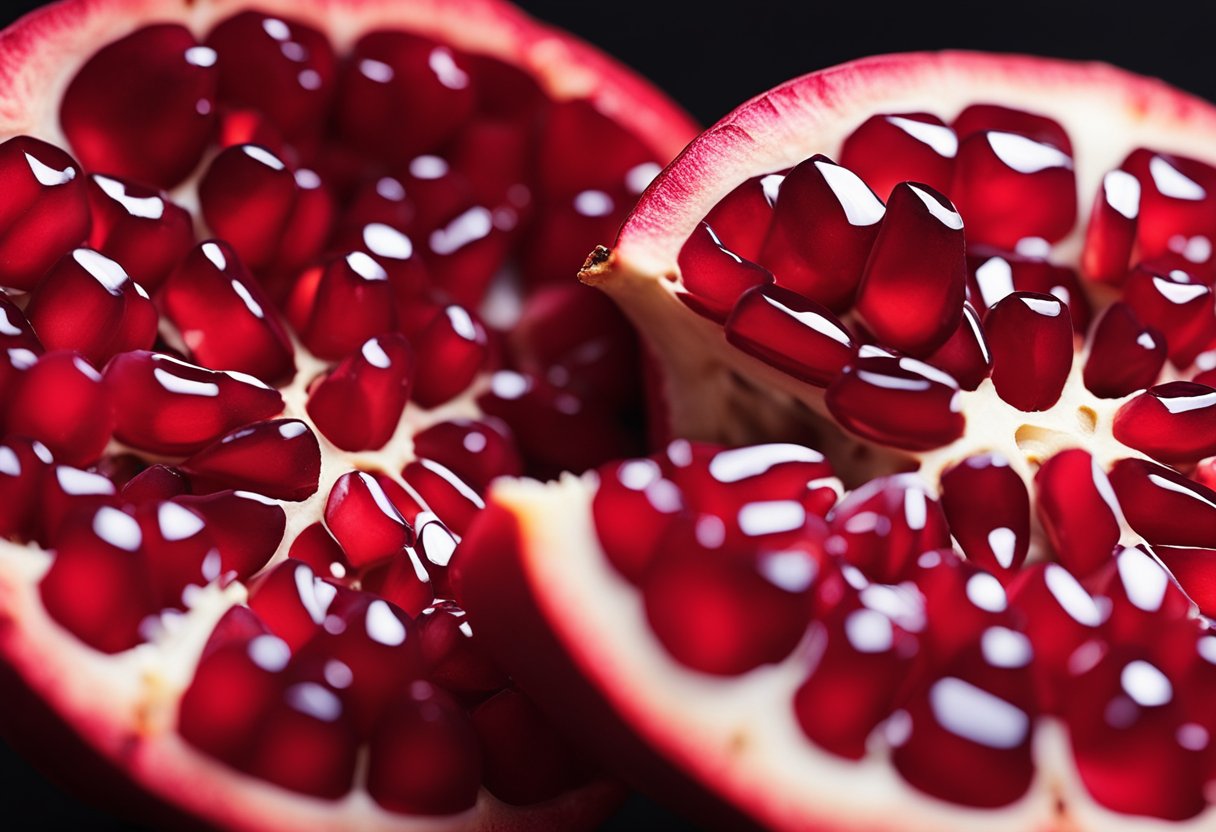
Keep in mind that when they reach the store, they usually range from pinkish to dark red, with the richer the red not necessarily meaning a riper fruit1.
Weight indicator
A ripe pomegranate should feel heavy for its size, which is an indication that the seeds inside are full and juicy2. This can help differentiate it from an unripe or overripe fruit, which may feel lighter than expected.
Shape indicator
Pomegranates can vary in shape, but a ripe one should have a round, smooth, and uniform appearance. Unripe fruits may be angular or exhibit flattened areas, while an overripe pomegranate may become misshapen from the weight of its interior contents3.
Texture indicator
The skin texture of a ripe pomegranate is distinctly leathery4, as it transforms to accommodate the increasing weight and juice content of the fruit. It should also be smooth and firm, providing a slight give when pressed but not feeling too soft or squishy5.
Sound indicator
When examining a pomegranate for ripeness, listening to the sounds it makes can provide invaluable information. Hold the fruit close to your ear and give it a gentle shake. If you hear a metallic, bell-like sound, it’s a good sign that the seeds inside are well-developed and juicy6.
Fingernail test
While this test may not apply to all pomegranates, it can still provide insight into the fruit’s ripeness. Gently press one of your fingernails into the skin of the pomegranate. If it easily pierces the skin and reveals the reddish arils underneath, it’s likely ripe and ready to eat7.
Stages of pomegranate ripeness
In this section, we will discuss the different stages of pomegranate ripeness, including unripe, ripe, and overripe pomegranates. Understanding these stages will help you choose the perfect pomegranate for your needs and enjoy its optimal taste and texture.
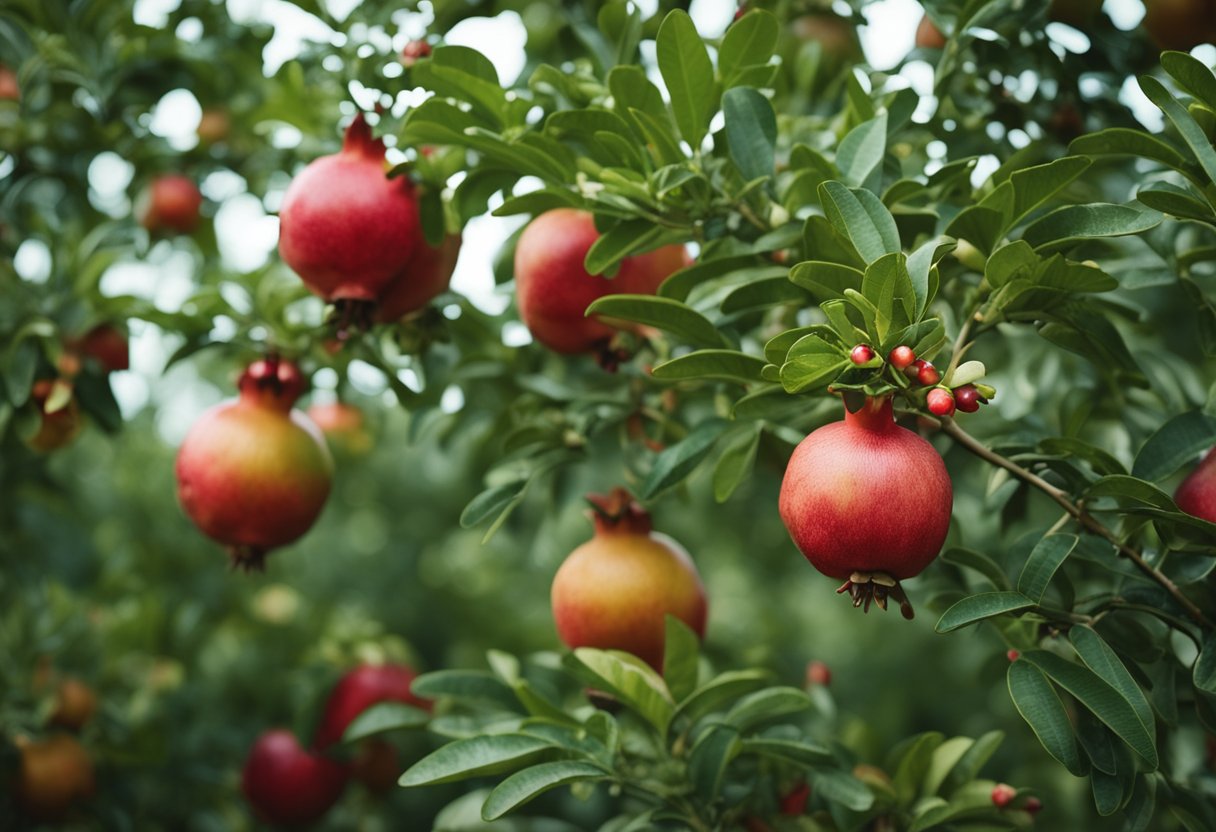
Unripe pomegranate
An unripe pomegranate is still in the early stages of development and not yet ready for consumption. Its skin is predominantly green, and the inside arils are not yet fully formed or sweet.
The texture of an unripe pomegranate is hard, and the taste is tart or sour. It’s essential to wait until the fruit ripens before consuming it to enjoy its full flavor and nutritional benefits.
Ripe pomegranate
A ripe pomegranate is the ideal stage to consume this delicious fruit. It has a deep, rich reddish-brown color, which indicates that it’s ready to be enjoyed. The skin of a ripe pomegranate is smooth, firm, and leathery. When you pick it up, it should feel heavier than its unripe counterpart due to the plump, juice-filled arils.
The taste of a ripe pomegranate is sweet and juicy, while the texture is soft yet slightly crunchy. This stage is perfect for eating fresh, juicing, or incorporating into various dishes to add a burst of flavor.
Overripe pomegranate
An overripe pomegranate is past its prime and starts to lose its delicious taste and texture. The skin may appear more wrinkled and lose its firmness, while the arils inside become mushy and less flavorful. Overripe pomegranates may also have brown or dark spots on their skin, indicating that the fruit quality has declined.
It is best to avoid consuming overripe pomegranates as the flavors are not optimal, and the texture may be undesirable. Whenever possible, choose ripe pomegranates to ensure you’re enjoying this fruit at its very best.
The pomegranate harvest season
Pomegranates are a delicious and nutritious fruit rich in antioxidants and vitamins. Knowing the right time to harvest them is essential for enjoying their full flavor and health benefits.
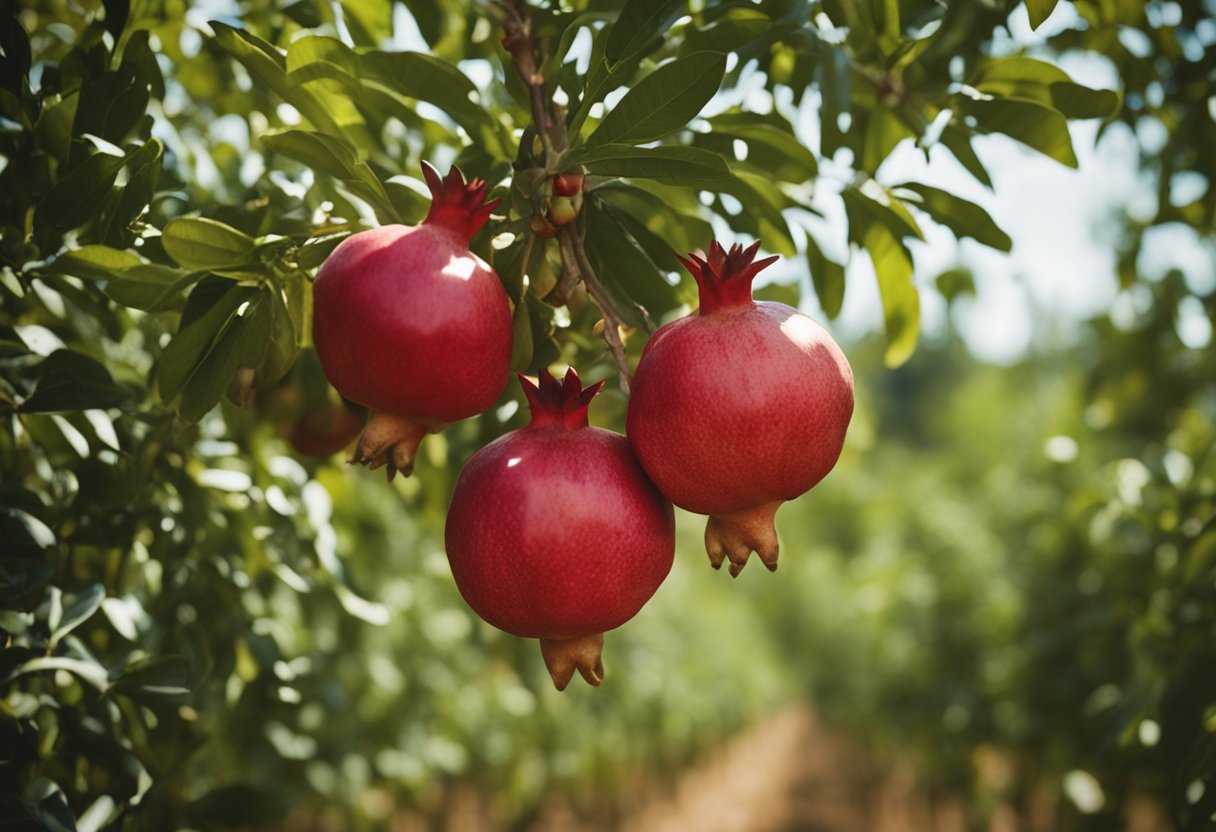
The pomegranate harvest season typically occurs during the fall months, with most varieties ripening between September and November. However, in warmer climates, it is possible for pomegranates to be ready for picking as early as late July or August source.
Pomegranate trees usually flower from midspring into fall, and fruits that set during March or April will generally be ready for harvest between August and October, depending on the variety source. The time of year and climate greatly influence pomegranate harvesting, as these fruit trees typically thrive in USDA hardiness zones eight through eleven sources.
To determine if a pomegranate is ripe and ready for harvest, there are a few key indicators to consider. The fruit’s exterior color is a good indicator, with ripe pomegranates displaying a rich, deep reddish-brown hue source. Additionally, the skin should have a leathery texture, and the fruit should give slightly when gently squeezed.
In conclusion, understanding the pomegranate harvest season and recognizing the signs of ripeness will help you enjoy this wonderful fruit at its peak flavor and nutritional value. Keep an eye on your pomegranate trees during the fall months and be prepared to harvest those delicious, ruby-red arils when the time is just right.
Buying a good pomegranate
When shopping for a ripe pomegranate, it is important to know what indicators signal a high-quality fruit. A good pomegranate can be distinguished by evaluating its shape, weight, and skin tone. Careful observation and a hands-on approach can help find the perfect fruit at your local supermarket or grocery store’s produce section.
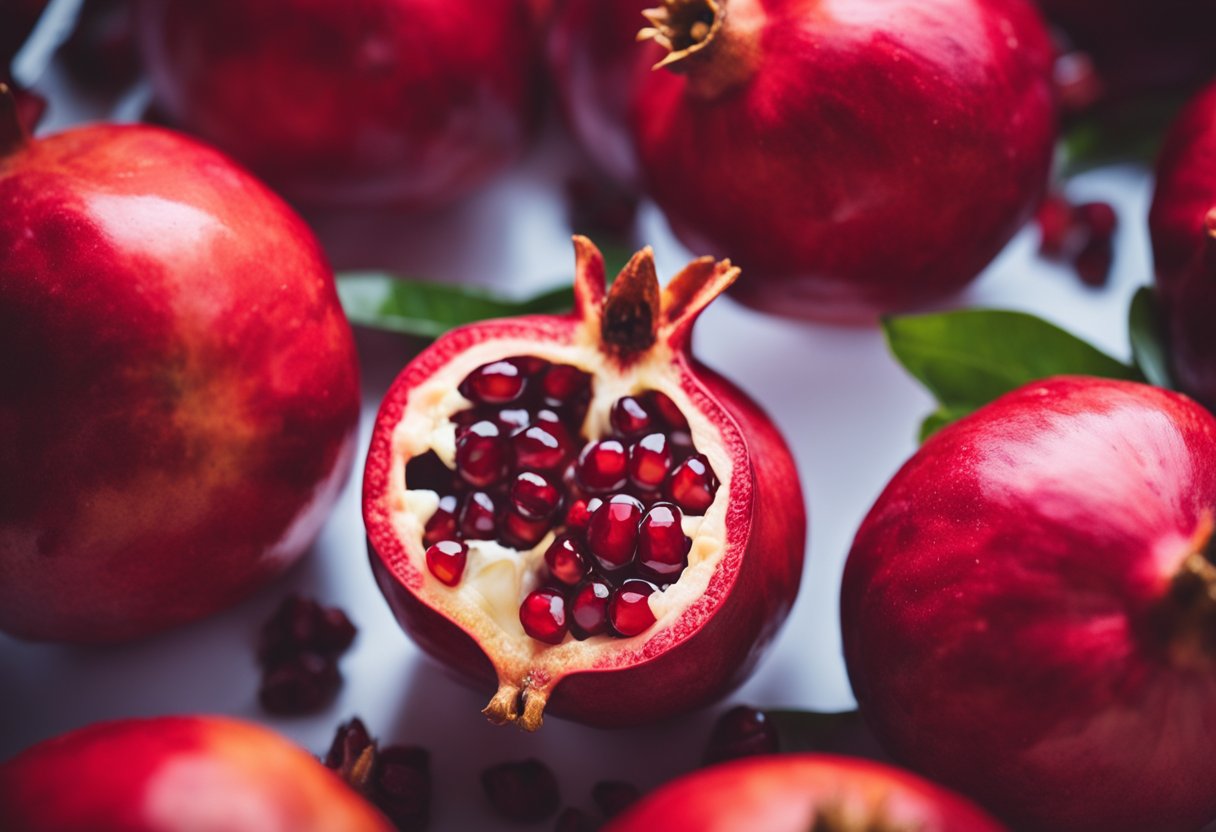
Begin by inspecting the shape of the pomegranate. A ripe fruit will not have a perfect spherical appearance. Instead, look for flattened or angular sides that deviate from a perfect circle (Allrecipes. This is a sign that the fruit has developed fully and is ready to be enjoyed.
Next, assess the weight of the pomegranate. A ripe fruit will be filled with delicious juice, making it noticeably heavier than an unripe one. When you pick it up, the weight should feel disproportionately heavy for its size (PureWow). This is a good indication that the pomegranate is full of tasty arils, making it a wise choice to buy.
Finally, observe the skin tone of the pomegranate. Pomegranates come in various shades of red, ranging from light to dark. Regardless of its hue, the fruit’s skin should be smooth, leathery, and firm (Allrecipes). Examine the fruit’s color and avoid those that still have any traces of green, which indicate that the fruit is not yet ripe (Rural Living Today).
Using these key factors, consumers can confidently select ripe pomegranates in the produce section of their local grocery store or supermarket. By focusing on the fruit’s shape, weight, and skin tone, one can enhance their pomegranate buying experience and enjoy the juicy, nutritious arils of a perfectly ripe fruit.
Storing pomegranates
Pomegranates are a nutritious and delicious fruit, but like any fruit, they need to be stored properly in order to maintain their flavor, texture, and freshness. This section will discuss three common methods for storing pomegranates: Room Temperature Approach, Refrigerator Approach, and Freezer Approach.
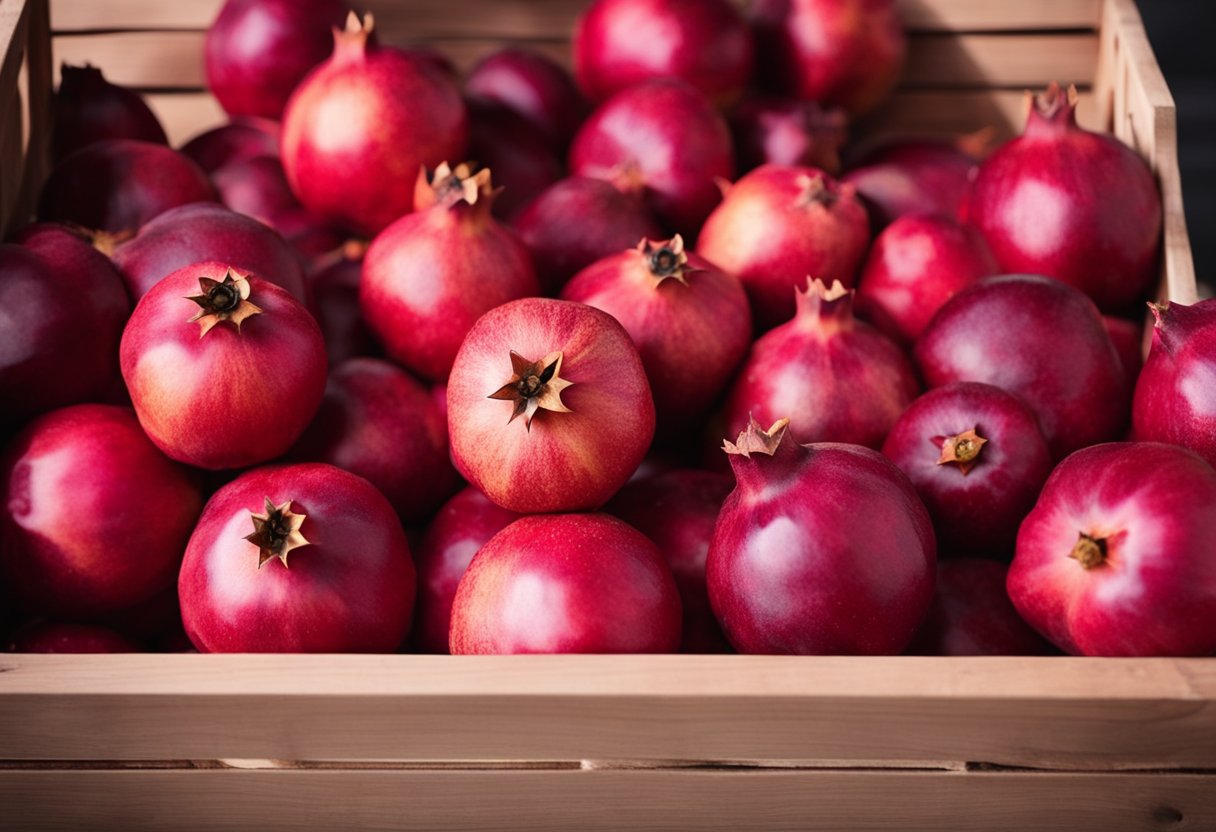
Room temperature approach
Storing pomegranates at room temperature is a suitable method for short-term storage. Place whole pomegranates in a cool, dry, and well-ventilated area, away from direct sunlight.
They can be stored on a countertop or in a pantry for a few weeks. However, avoid putting pomegranates near sources of heat, as this can speed up the ripening process and lead to spoilage.
Refrigerator approach
For longer-term storage, whole pomegranates can be kept in the refrigerator. This will extend their shelf life to two months or more.
It’s recommended to not store them in the crisper drawer, where humidity levels are typically higher than on the shelves. Instead, simply place unwrapped pomegranates on a refrigerator shelf.
When it comes to pomegranate seeds, you can store them in a plastic bag or reusable airtight container to keep them fresh.
First, dry the seeds using a paper towel or clean kitchen towel. Then, seal them in the chosen storage container. Refrigerated seeds will remain fresh for a week or more.
Freezer approach
If you wish to store pomegranate seeds for an even longer period, the freezer is an excellent option. To do so, begin by flash-freezing the seeds.
Spread them out on a lined baking tray and place the tray in the freezer for a few hours until the seeds are frozen. Afterward, transfer the frozen seeds to an airtight container or freezer bag, which will keep them preserved for up to one year.
Remember, when choosing the best storage method for pomegranates, consider factors such as the duration of storage and available space in your refrigerator or freezer. By following these guidelines, you can ensure that your pomegranates remain fresh and delicious for as long as possible.
Using ripe pomegranates
Ripe pomegranates can elevate the taste and visual appeal of various recipes. One popular way to enjoy these nutritious fruits is in a pomegranate salad.
Start by extracting the arils from the pomegranate. To do this, gently cut and split the pomegranate in half and deseed it by tapping the shell, releasing the ruby-red seeds.

Once you have the arils ready, a classic combination involves mixing them with baby spinach, walnuts, and feta cheese. This blend of flavors and textures creates a delicious, healthy salad. The ripe pomegranates add a burst of vibrant color and a sweet-tart flavor to the dish.
If you prefer a liquid treat, try using ripe pomegranates for fresh pomegranate juice. It is an excellent base for refreshing cocktails and mocktails alike, with its rich, fruity taste. For added depth, mix it with other fruit juices or even sparkling water.
Cooking with ripe pomegranates is another option to explore. You can sear the arils in a hot pan for a brief time, making them tender and slightly caramelized. These seared arils can be used as a garnish or added to various dishes, such as grain bowls or roasted vegetables, enhancing their taste and appearance.
Remember, confident and knowledgeable handling of ripe pomegranates enables you to unlock their full potential in various recipes, both sweet and savory. Investing time in mastering the technique of cutting, deseeding, and using ripe pomegranates will reward you with dishes that are as delicious as they are visually appealing.
Health benefits of pomegranates
Pomegranates are not only delicious but also packed with numerous health benefits. Rich in antioxidants, they help in neutralizing the harmful effects of free radicals in the body. The powerful antioxidants found in pomegranates, such as punicalagin and ellagic acid, contribute to their anti-inflammatory properties.
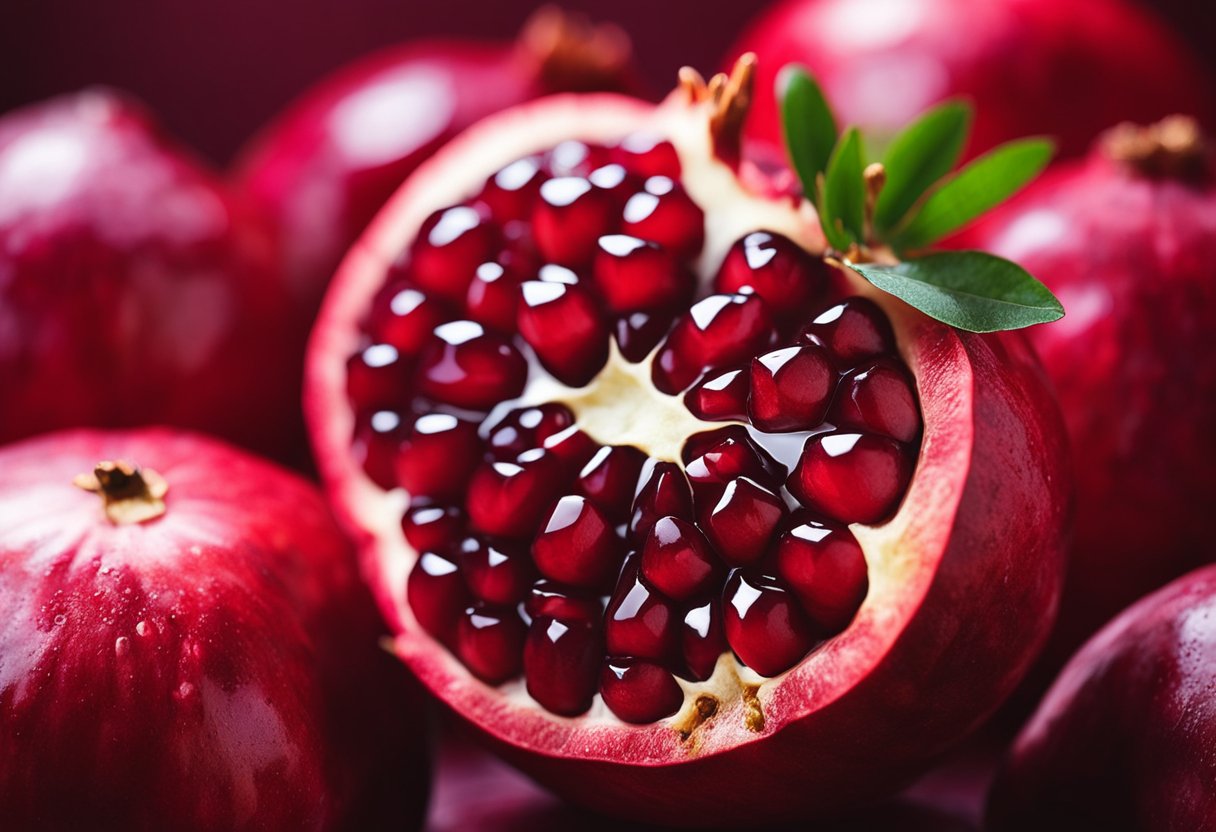
One of the notable benefits of pomegranates is their potential for heart health support. Consuming pomegranate juice is found to help lower bad cholesterol (LDL) and promote good cholesterol (HDL) production.
This can consequently reduce the risk of heart diseases, such as atherosclerosis. Moreover, the antioxidants in pomegranates may also help in maintaining normal blood pressure levels and preventing blood clot formation.
Pomegranates are also known for their cancer-fighting properties. The high concentration of antioxidants, especially ellagic acid, works to inhibit the growth of cancer cells. Studies have shown that pomegranate extract or juice can potentially suppress the progression of prostate, breast, and colon cancer.
Additionally, pomegranates have immune-boosting properties due to their content of vitamin C and other essential nutrients. The vitamin C in this fruit can help to strengthen the immune system and protect the body from various infections and diseases. Furthermore, pomegranates contain dietary fiber, which promotes healthy digestion and weight management.
In conclusion, the health benefits of pomegranates are vast, from heart health support, cancer-fighting properties, immune-boosting, and digestive health promotion. Incorporating pomegranates into your diet can lead to a healthier lifestyle and potentially reduce the risk of numerous health issues.
Footnotes
-
https://insanelygoodrecipes.com/how-to-tell-if-a-pomegranate-is-ripe/ ↩
-
https://www.allrecipes.com/article/how-to-pick-a-ripe-pomegranate/ ↩
-
https://minnetonkaorchards.com/how-to-tell-if-a-pomegranate-is-ripe/ ↩
-
https://rurallivingtoday.com/gardens/how-to-tell-if-a-pomegranate-is-ripe/ ↩
-
https://minnetonkaorchards.com/how-to-tell-if-a-pomegranate-is-ripe/ ↩
